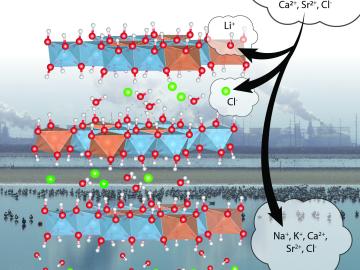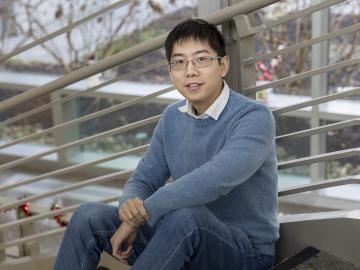Filter News
Area of Research
- Advanced Manufacturing (5)
- Biology and Environment (17)
- Clean Energy (70)
- Climate and Environmental Systems (2)
- Computer Science (2)
- Energy Sciences (1)
- Fusion and Fission (6)
- Fusion Energy (5)
- Isotopes (5)
- Materials (52)
- Materials for Computing (5)
- National Security (14)
- Neutron Science (28)
- Nuclear Science and Technology (22)
- Nuclear Systems Modeling, Simulation and Validation (2)
- Quantum information Science (3)
- Supercomputing (38)
Date
News Topics
- 3-D Printing/Advanced Manufacturing (35)
- Advanced Reactors (17)
- Artificial Intelligence (26)
- Big Data (16)
- Bioenergy (19)
- Biology (14)
- Biomedical (26)
- Biotechnology (6)
- Buildings (12)
- Chemical Sciences (14)
- Clean Water (5)
- Climate Change (24)
- Composites (4)
- Computer Science (54)
- Coronavirus (23)
- Critical Materials (5)
- Cybersecurity (4)
- Decarbonization (17)
- Education (1)
- Emergency (1)
- Energy Storage (28)
- Environment (45)
- Exascale Computing (7)
- Fossil Energy (2)
- Frontier (6)
- Fusion (17)
- Grid (12)
- High-Performance Computing (15)
- Isotopes (15)
- ITER (1)
- Machine Learning (15)
- Materials (13)
- Materials Science (47)
- Mathematics (3)
- Mercury (1)
- Microscopy (10)
- Molten Salt (2)
- Nanotechnology (19)
- National Security (14)
- Net Zero (4)
- Neutron Science (39)
- Nuclear Energy (37)
- Partnerships (8)
- Physics (15)
- Polymers (10)
- Quantum Computing (7)
- Quantum Science (23)
- Security (5)
- Simulation (10)
- Space Exploration (5)
- Statistics (2)
- Summit (21)
- Sustainable Energy (36)
- Transformational Challenge Reactor (5)
- Transportation (24)
Media Contacts

The formation of lithium dendrites is still a mystery, but materials engineers study the conditions that enable dendrites and how to stop them.

Rigoberto “Gobet” Advincula has been named Governor’s Chair of Advanced and Nanostructured Materials at Oak Ridge National Laboratory and the University of Tennessee.

A team from the ORNL has conducted a series of experiments to gain a better understanding of quantum mechanics and pursue advances in quantum networking and quantum computing, which could lead to practical applications in cybersecurity and other areas.

Liam Collins was drawn to study physics to understand “hidden things” and honed his expertise in microscopy so that he could bring them to light.

In the quest for domestic sources of lithium to meet growing demand for battery production, scientists at ORNL are advancing a sorbent that can be used to more efficiently recover the material from brine wastes at geothermal power plants.

A typhoon strikes an island in the Pacific Ocean, downing power lines and cell towers. An earthquake hits a remote mountainous region, destroying structures and leaving no communication infrastructure behind.

Scientists at have experimentally demonstrated a novel cryogenic, or low temperature, memory cell circuit design based on coupled arrays of Josephson junctions, a technology that may be faster and more energy efficient than existing memory devices.

A select group gathered on the morning of Dec. 20 at the Department of Energy’s Oak Ridge National Laboratory for a symposium in honor of Liane B. Russell, the renowned ORNL mammalian geneticist who died in July.

Eugene P. Wigner Fellow Victor Fung’s story is proof that a series of positive experiences around science and happy accidents can lead to a rewarding research career. He joined ORNL in 2019.

Oak Ridge National Laboratory researchers created a geothermal energy storage system that could reduce peak electricity demand up to 37% in homes while helping balance grid operations.




